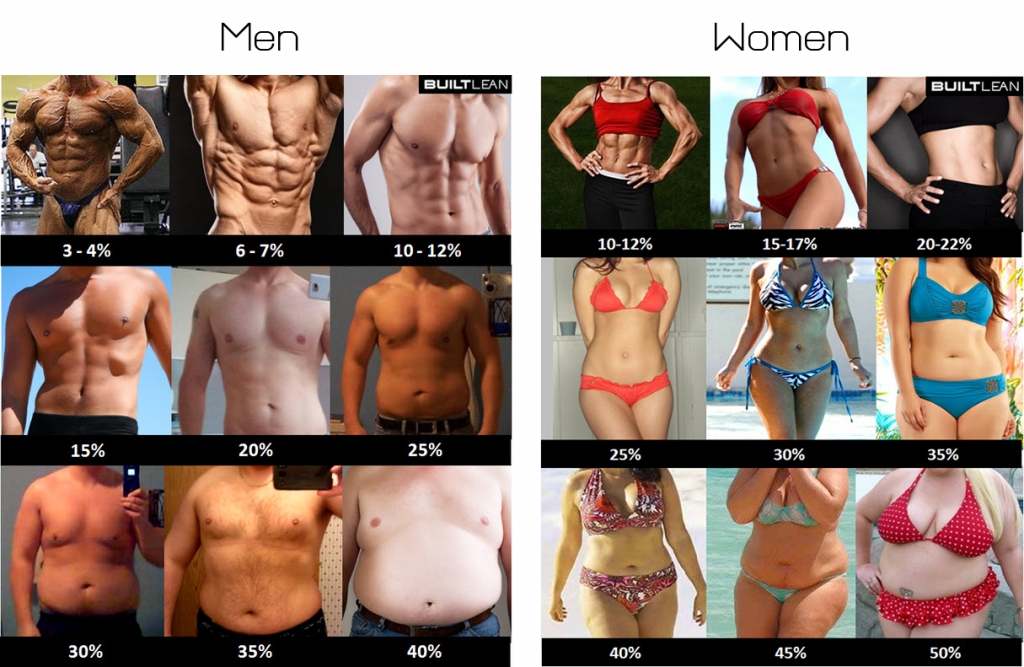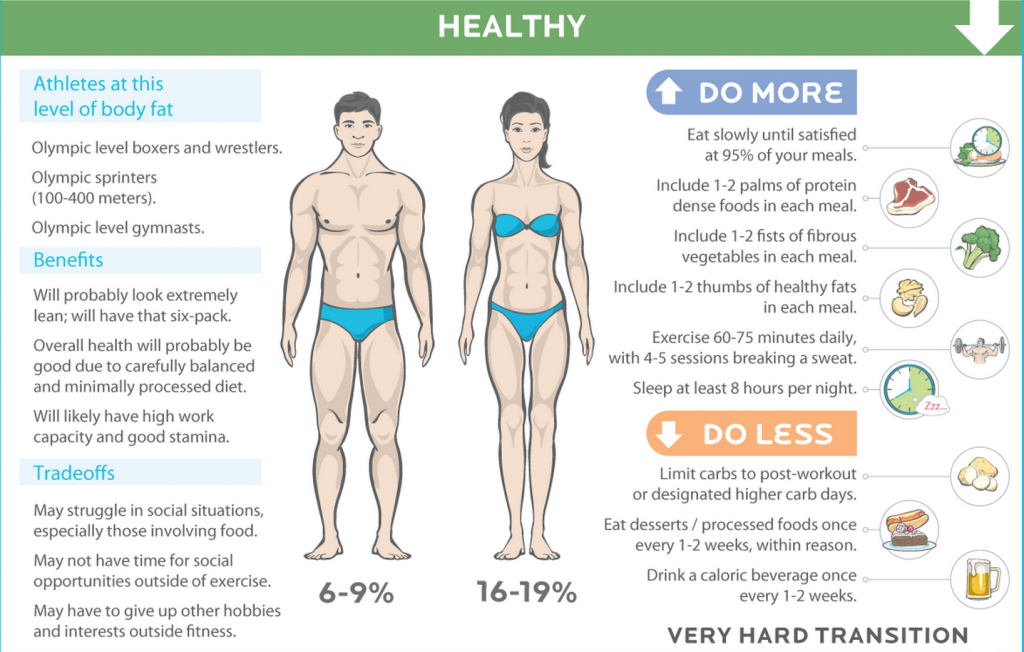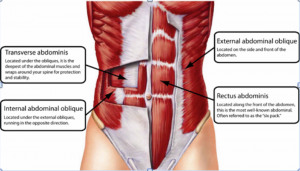If you are looking for a quick fix program that gives you flat and defined abs fast, then this article is not for you. What you will glean from this post however is a better understanding of what it really takes to get 6-pack abs, and how you can work to getting one—for real this time.
Having visible abs may be one of the most sought after goals for fitness buffs and athletes alike. That being said, the reality is that most people who set out on an ab toning journey fail to see results; despite a considerable amount of effort. If you are serious about wanting 6-pack abs you need to understand the principals that I outline in this article. There are several factors that will affect your ability to have a sculpted mid-section, including:
[list type=”4″]
- Body composition
- Hypertrophy training for abdominal musculature
- Genetic make up
- Stress and hormonal considerations
- Ability to stay compliant with your nutrition and training program
[/list]
As with anything in life, if you want to achieve something the first step is to identify what you want, then understand the measures you must implement to achieve/succeed at that goal. Let’s first review some common misperceptions about abs to help you determine what is actually a feasible goal.
Common Misconceptions
[list type=”1″]
- That you must exercise excessively, follow intolerable diet restrictions and have an endless amount of willpower in order to achieve a base-level of fitness.
- That just a few small changes to your diet and minimal amounts of exercise (or none in some cases) will turn you into a fitness model in no time. This is commonly the picture painted by a number of fitness facilities, the media, and other marketing resources.
- Spot reduction or the belief that body fat can be “targeted” with a specific exercise. e.g. The belief that doing 100 crunches will burn the fat in the abdominal area.
[/list]
Another problem…
Fitness icons, body builders and models are used to demonstrate the “norm” when the reality is that most of these images are doctored with programs such as Photoshop. Or, their body is in fact natural, but it’s not clearly outlined what it took for them to achieve the low levels of body fat/physique seen in the photos.
Understanding Body Composition
You must understand one basic physiological principal of the metabolic processes of the body – fat is lost from the entire body as a result of diet and regular exercise. Meaning, we cannot spot reduce an area, and muscle growth in any region does not necessarily reduce fat in that region.
If your goal is to have visible abs then you need to address your body composition. As you can see in the pictures below abs don’t normally become visible until a man’s body fat percentage is below 15% and female’s is below 20%.

So how do you change body composition?
Quite simply:
[list type=”4″]
- Address behaviours
- Nutrition
- Strength and Conditioning
[/list]
Precision Nutrition released a great infographic series that clearly illustrates what it takes to obtain a certain level of “leanness.” Images from that infographic can be found below, but if you’re serious about toning your physique, I highly encourage you to read the full article HERE.



As you can see from the illustrations above to go from overweight to a healthy body composition is not really that hard. Yes you have to do a few things like:
[list type=”4″]
- Start leisurely exercising 4-5x per week
- Cut down on sugar and other processed foods
- Portion control
[/list]
But the bottomline is that it’s doable. If you do the 3 things listed above consistently for 6 months you will increase your likelihood of successfully dropping into a healthier body fat range with relatively little effort.
Once you have dropped down to a healthier body fat range, the next step requires a little more effort, commitment and planning. As you can see from the illustrations above you have to make additional modifications to your behaviour if you are to continue to slim down and tone up. At this stage it is common—and typically recommended—for people to seek the guidance of a professional to ensure that:
[list type=”4″]
- Your workouts are geared more towards your specific goals
- Your nutrition is dialed-in
- Accountability is maintain and consistency is adhered to
[/list]
In general you will have to invest more time and be prepared to make some tradeoffs.
Taking that a step further—going from lean to leaner—you will have to modify your behaviours even more. This means:
[list type=”4″]
- Your workouts must be consistent and properly structured
- It will be essential that you make time for meal prep so that you can include more veggies, no processed foods, and be diligent with you macros 90% of the time
- You will have to get serious about rest and recovery
- Understand your hunger and fullness cues
[/list]
It is important to recognize that the more you shift your focus on getting lean for aesthetic appearance, the more you will potentially shift away from health and performance. In fact, being really lean actually has nothing to do with being “healthy.” I will dive into this more later.
Understanding Abs
If you have successfully reduced your body fat percentage to 10-12% (males) or 20-22% (females) but want your abs to be more visible, then you must consider adding in ab-specific hypertrophy training.
I have written a number of core training articles that I encourage you to read if you’d like to make your abs more visible, including:
[list type=”4″]
- How To Engage Your Core Effectively, which you can read HERE
- My Top 5 favourite Core Exercises, which you can read HERE
[/list]
If you have yet to check out either of these articles I recommend that you do. If you have dysfunctional abdominals, (meaning you’re not properly engaging your core musculature) chances are really good that you are over recruiting your hip flexors (psoas and rectus femoris)—which will ultimately hinder your ab training success and potentially lead to tight hip flexors and unnecessary pain.
Abdominal Training
Let’s assume that you are able to efficiently recruit your transversus abdominis, internal and external obliques, and are able to properly engage your rectus abdominis. Here are some exercises you can choose from to target abdominal hypertrophy:
[list type=”4″]
[/list]
As you progress your training you’ll want to do so in a way that promotes hypertrophy to the rectus abdominis. By doing this you will increase the size of your muscle fibres, which will ultimately allow you to see the contrast between muscle bellies and linea alba. AKA define your abs.
There are two types of muscular hypertrophy: sarcoplasmic and myofibrillar. Sarcoplamic hypertrophy typically involves higher rep training, and the adaptation results in an increase in the number of capillaries and greater capacity of glycogen storage. One of the reasons that muscles will look bigger is that for every one molecule of glycogen, three molecules of water are bound to it. So now you know what body builders are really made of 😉 The latter, myofibillar is spurred by heavy resistance training, which increases the size of the fibers’ contractile apparatus or myofibrils.
I suggest that you pick the style of training that will facilitate your aesthetic goals, but also offer strength and performance benefits—which is myofibillar. By doing this you will successfully increase the density of the myofibrils in the muscle fibre—what makes muscles dense and hard, not necessarily big.
For this style of training you need to add load or increase the intensity of time under tension in which your abs are loaded.
You training program should include:
[list type=”4″]
- Loaded exercises involving lower number of repetitions with added resistance
- 6-12 reps
- Training 3-5x per week
- Increasing definition should be your priority
[/list]
Exercise examples:
[list type=”4″]
- Weighted ab-clams
- Weighted cable chops/lifts
- Hard style planks and sit ups
[/list]
Factors that Could Hinder Your Success
What happens if your upper abs are visible but your lower abs aren’t? The most obvious reason why your abs may not be evenly defined—despite your training efforts—is your body composition. What I mean by this is that you need to achieve a certain level of body fat to successfully define your abdominals. If you have not yet achieve that level of body fat, quite simply you will not see the definition you are looking for.
The other factor to consider is your genetic make up. Not everyone has abs like the one’s seen on the cover fit magazines hiding under their belly fat. Like other body parts, everyone is built differently. Some people have staggered abs, some have angled, some have 8-packs, some only have 4 and unfortunately that’s just the way it is.
The last point I want to address is hormonal influences and stress. I am only going to touch lightly on this point because a more thorough response is out of the scope of this post. That said, it is important to understand that if you are living your life in a constant state of stress, then adding more stress—via diet and exercise—is not going to serve you. You need to address stress, find balance, and sleep has to become a priority before you start your training regime.
In summary, lowering your body fat percentage—if that’s one of your goals—comes down to your level of commitment. In other words, what you are willing to do to reach your goal. Figure out exactly what you want, and know what your priorities are.
For example:
[list type=”4″]
- Know WHY you want that goal
- Understand what it will take to reach that goal
- Know your trade offs and be honest about what you are willing to do
- Once you have that information locked down you can determine how often, how consistently, and how precisely you are willing to do the things that will help you achieve your goal(s)
- Figure out what you’re not willing to do right now, and identify why not
[/list]
After that you’ll have a plan—a plan that needs action, a plan that is real, and one that is obtainable. At this point you should feel excited because your picture is clear and your path is mapped. You should also be pumped because now you have a better understanding of your abdominal, and how to define them.
If you have any questions about any of the points that I have outlined within this post, please don’t hesitate to reach out to me directly via email (andrea@balancemotion.com) or come and see me at the BIM studio. I along with all of the other trainers are here to help you reach your fit goals, whatever they may be. You can also fill out the strategy form below and book a FREE strategy session with us.
Here’s to achieving the abs YOU want.
Andrea
[wufoo username=”balanceinmotion” formhash=”zlh67uu0wvmkkj” autoresize=”true” height=”1445″ header=”show” ssl=”true”]






